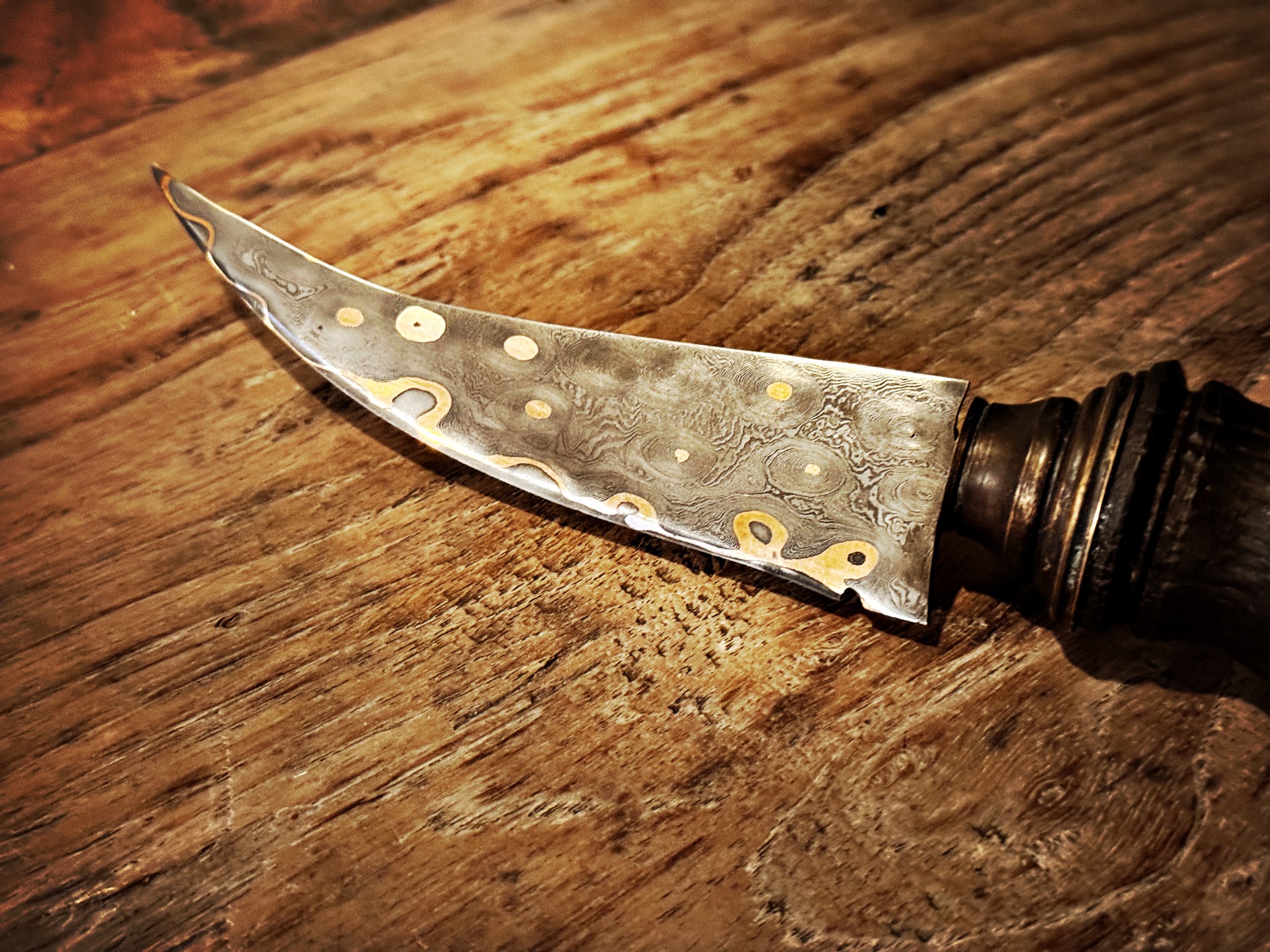Growing in or Growing out
If you reduce a knife far enough in size, it becomes a needle. That which divides becomes that which reunites with the help of the thread. What is lost in this process is the sharpness of the blade, which is completely reduced to the point of the needle. Sewing fabrics, textiles, and skins together is one of the oldest cultural techniques of all. What has once been so woven together has the choice of either growing together or being bound together, in the latter case festering in constant repulsion, yet united by thread.
To grow in or to grow out, therein lies the essential question of all healing. To accept and expand into the Other, or to reject it. If only our minds held the same wisdom as our bodies do. For the latter instinctively know to expel the virus, but to enclose the ink of the tattoo as a new organ. To grow out what cannot be made use of, and to grow in what settles with new affordance into the old organism.
This simple process is in constant motion on all sides and all levels of creation. Suddenly we ourselves are the splinter that is ejected from a body larger than us. Suddenly we are virus and ink at the same time, constantly touched by the bodies that surround us, injected by needles of fate, cut out by knives of fate. To grow in or to grow out is the existential question facing all bodies in genuine contact with the Other. Whether these bodies are divine or daemonic, animal or human, vegetable or mineral. To enclose the Other with our own tissue, to bind it into our own body, or to push it slowly, festering and inflammatory, beyond the threshold of our skin into that vast realm that is not us.
Now, if you wanted to, you could think about the places where your life currently is inflamed. What exactly is happening here? Can you name the Other that is under your skin here? Can you see the needle which has sewn it into your life? What will your body do now? Grow it in or grow it out? How would you have to change so that a virus can become ink? So that what appears to be an attack of the Other can in fact become a new organ in a slightly more porous body?
Inflammation in our outer body is characterized by heat, pulsation, pain, pus, and redness. Inflammation in our inner body speaks a different language; it can manifest itself as fear, doubt, and aggression. However, just as the pus is not the actual alien object that has invaded our body, so the fear we feel is not the Other. It is merely our reaction to its presence.
Looking beyond one’s fears, pains, doubts, guilt and aggression is a critical job we have to do if conscious healing is what we want to learn. Not mistaking the pus for the cause, the pain for the Other is the foundation of understanding the process we have been sewn into. Seeing the alien object that has invaded the territory of our bodies is the first step. Seeing the needle or knife that has brought it into our lives is a much more advanced one. In either of these phases, however, we need to encounter our own adverse experience like the doctor encounters the patient like the surgeon encounters the crash victim: with a calm, clear gaze, with trust and confidence in the needles and blades in our own hands, and in the decision-making powers we hold as humans.
Now, as goês these needles and blades we use to operate on ourselves are not the stainless, sanitized scalpels, clamps, and staples of the surgeon. Our goêtic instruments are alive themselves. They hold their own agency and Otherness. Thus, applying them to our own bodies is not an act guided only by scientific precision or artistic control, but equally by negotiation, mutual affordances, and volatile relationships. For our instruments are the spirits themselves. We cut with daemons, we stitch with herbs, we seal with stars, we anoint with deities. Our practice of growing in or growing out is anchored both in our clear vision, our unbiased understanding and application of free will – and, when all this has happened – in our negotiating skills, social behavior, motivational understanding of forms of life quite different from ourselves.
Either way, our journeys of healing are marked by outlines of pain. The ancient tree falls, the old river dries up, and the high mountainside breaks and collapses. The old carpet is sewn together from a hundred single pieces, the poisonous potion is concocted from a garden full of herbs, and the alchemical crucible is filled with a handful of secrets... Nothing new was ever created without first slitting open an old skin. Nothing new was ever brought to life, without breaking the boundaries of what came before. Understanding the knives that cut and the needles that sow, understanding the magical dynamics of growing in or growing out in alliance with spirits, enables us to participate in the experience of pain as a creative process.
Surely all the understanding in the world will never alleviate physical pain. But it may make it more bearable if we are not blindly subjected to it, but can participate in it with vision. The greatest ruptures, injuries, and shifts in our lives are invitations to adventure, once the grief of loss can be soothed by the anticipation of a new encounter. When the incision in our body is not only seen as an irreparable injury to our virgin skin – but as a necessary opening so that the ink can flow in, so that life can write itself within us, and so that our bodies can adapt to uncanny, often painful and crooked new functions. At the end of the day, none of us are here to be flawless. Instead, we are all here to be completely and utterly, radically naked, touched by the lips and hands, by the needles and knives of life and death.

